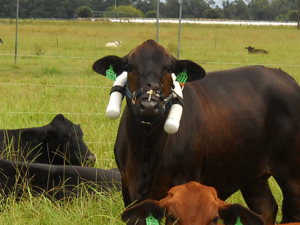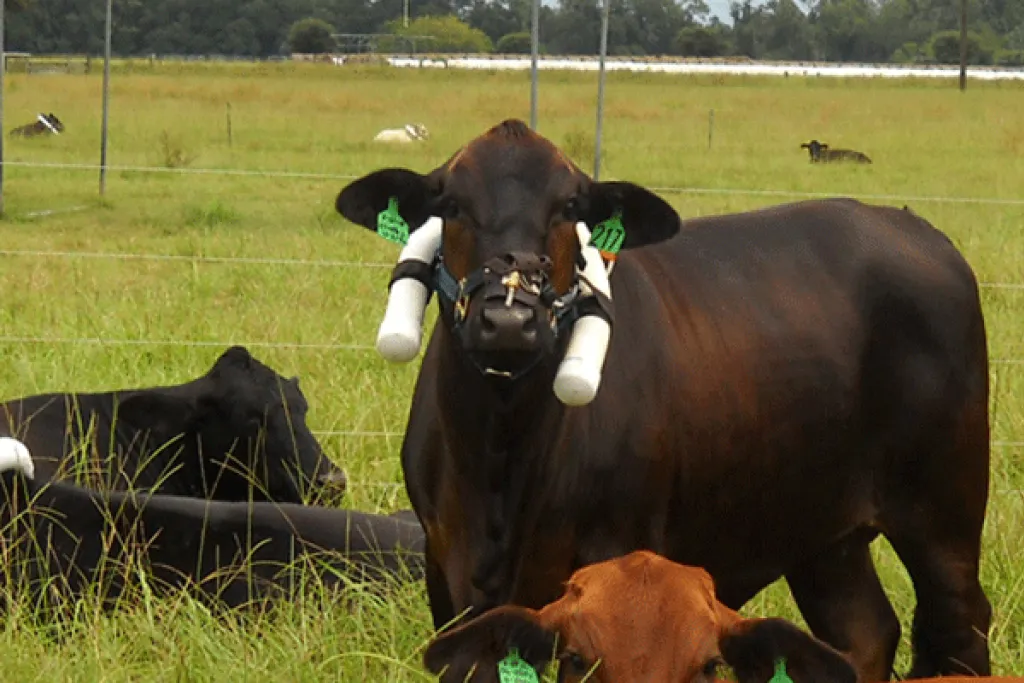
When you first learn that cows produce methane, a greenhouse gas, you might assume it comes from the animal’s rear end. But you would be wrong. “Methane is generated in an organ called the rumen, which is the first of the cow’s ‘four stomachs,’” said Nicolas DiLorenzo, a researcher at the University of Florida who studies methane production in cattle. “The rumen is quite close to the cow’s mouth, so the mouth is the closest exit. Therefore, the cow releases this methane by burping.” For several decades, researchers have been looking for ways to reduce the methane produced in the rumen. Now new research by DiLorenzo and others shows that a small change to cattle’s diets reduced the animals’ methane emissions by 11 percent. These findings are a step toward reducing greenhouse gas emissions from livestock. The study received funding support from USDA’s National Institute of Food and Agriculture’s Agriculture and Food Research Initiative (AFRI) program. For more information, read the University of Florida article.
Two AFRI projects are associated with this article.
Two AFRI projects are associated with this article.
Topic
Farm Bill Priority Areas
Animal health and production and animal products
U.S. States and Territories
Florida

